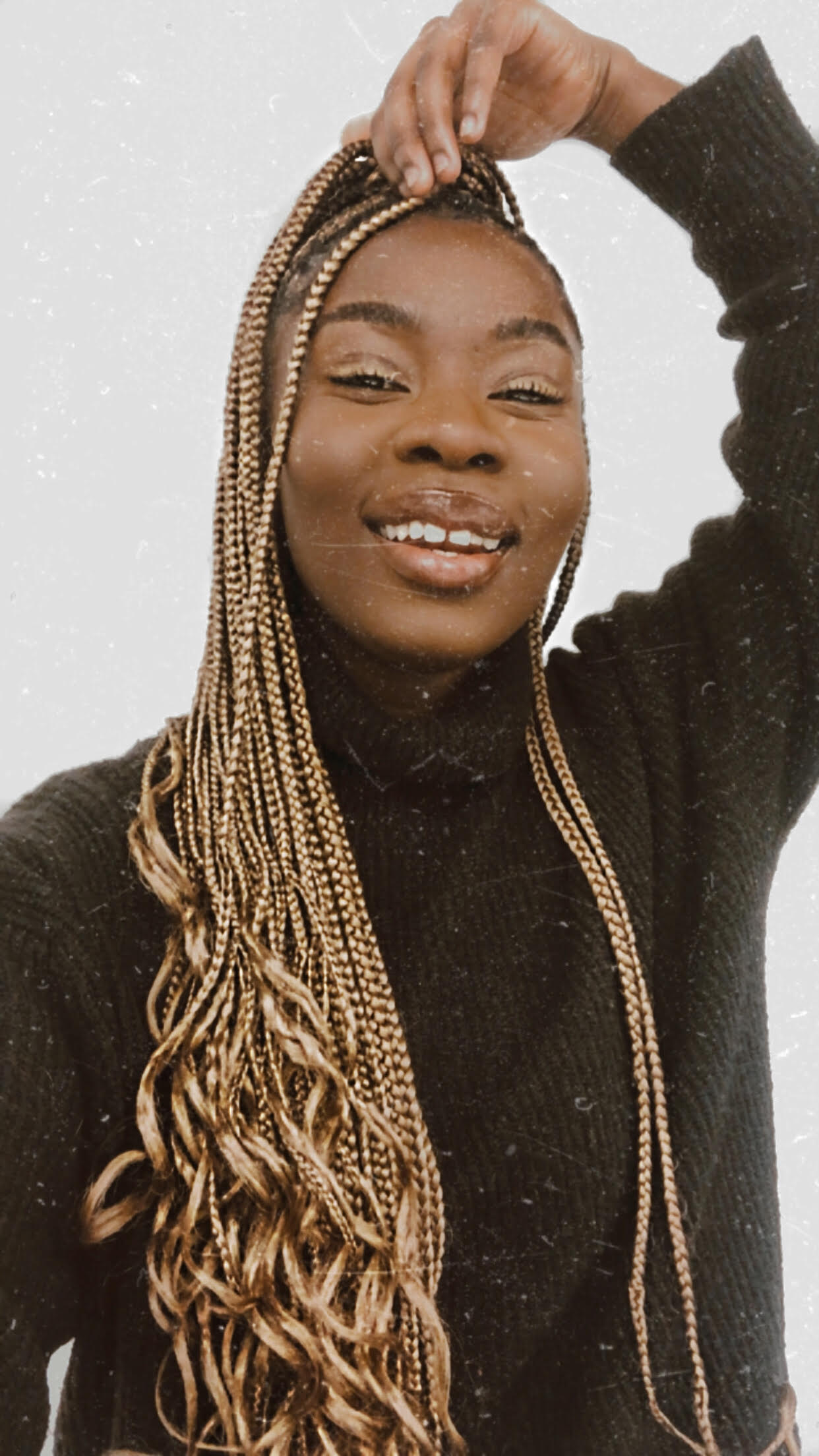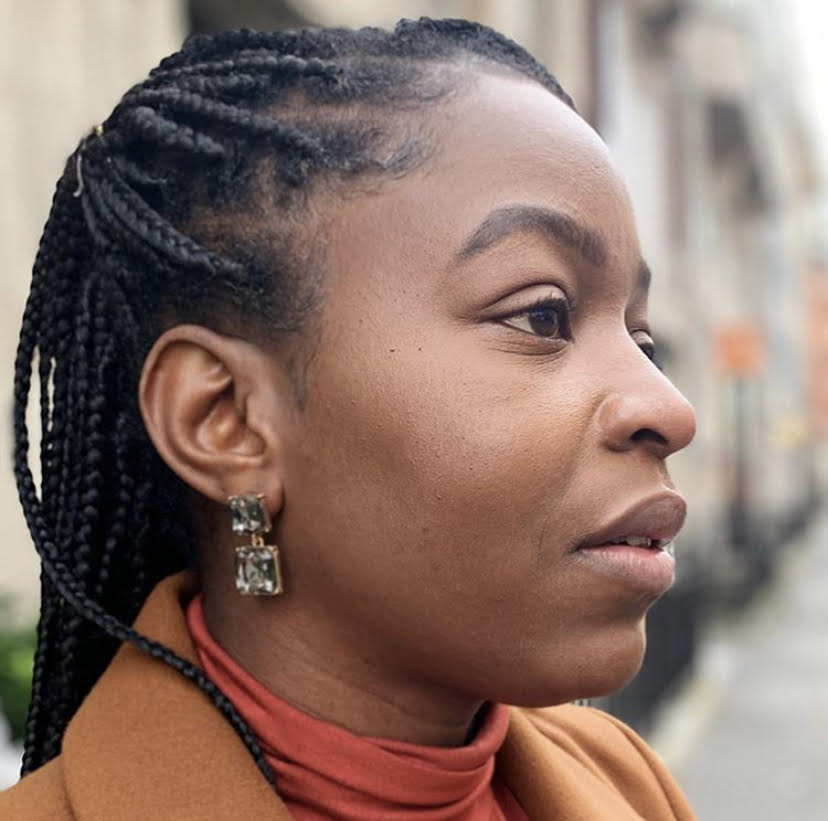Written by Florie Mwanza
Knotless braids are said to be the low-tension answer to box braids. We found out if this new braid style really is as protective of the hair and scalp as it is decorative.
Braids may appear purely decorative, but the primary purpose of the style is to protect the wearer’s hair from things like split ends, breakage and dryness caused by abrasive daily habits and exposure to the elements. Black hair, whether natural or chemically treated, thrives when it’s left undisturbed in styles that require no heat and low manipulation, which is why so many Black women opt to wear their hair in braided protective styles.
Although box braids have emerged as one of the more popular braid styles, the issues they can cause – from scalp inflammation to hair shedding – have many questioning if they’re more destructive than protective.
By the looks of what’s trending on some of Instagram’s most popular braid pages, knotless braids might just be the answer. These new favourites not only count the likes of Beyoncé, Justine Skye and Alissa Ashley as devotees but it’s also being hailed as the better option for hair and scalp health, while maintaining the same look and versatility of their predecessor. Thinking about trying it yourself? Here’s everything you need to know about knotless braids…
You may also like
- 5 braid trends that are set to be everywhere this summer
- A Quick Ting On The Black Girl Afro looks at the cultural and political history of Black hair and the industry behind it
What is the difference between knotless braids and box braids?
Although knotless braids can come in the same sizes and lengths as box braids, the main difference between the two, according to Gemma Moodie, afro hairstylist at Neville Hair and Beauty, is that “knotless braids look like they’re growing out of the scalp, whereas with box braids you can see the knot where the extension has been added”.
To achieve the look she explains knotless braids are created “by adding small amounts of hair to the braid as you go,” rather than starting out with a bulky, chunk of extension hair.
Eunice Asiedu, who’s been braiding her own hair for years and has recently worn her hair in knotless braids, explains: “The main difference between the two styles for me is with knotless braids, you have the instant flexibility to style and you can manipulate the hair, but with box braids, it takes a few days for your scalp to relax before you can style them.”
Can knotless braids help with traction alopecia?
The small distinction in how the extension hair is added might not sound like much, but one of the main reasons why box braids can be detrimental to the health of your scalp is because the tightness of the knot tends to pull on the hair, causing excessive hair shedding, and traction alopecia – especially around the hairline, which is prone to thinning.
According to Gemma, gradually adding hair to the braid means “knotless braids are an overall safer option, because the method creates less tension and pulling on the roots, so there’s less chance of traction alopecia and follicle damage.”
As someone who’s been getting her hair braided since childhood, Jhaniel Smith is adamant that this braiding technique makes a huge difference in the way her scalp feels. She explains that in the past although “the hairdresser had done her best to not to tug on my hair and scalp”, box braids still left her scalp feeling tight, and she experienced “damaged edges”.
However, if like Smith, you convert to knotless braids to reduce tension on your scalp, Eunice is adamant that you limit the amount of time you wear them for because in her experience, as your “hair starts to grow out the braids will start to feel heavier especially on the braids around the perimeter of your hair. I would advise you to only keep them for around two to three weeks.”
Are knotless braids better for those with scalp sensitivity?
One of the advantages of getting rid of the bulky braid knot is that it keeps the extension hair from touching the scalp too closely. This is a significant plus for knotless braids because the alkaline coating manufacturers use on synthetic braiding hair has been known to cause scalp sensitivities such as itching and inflammation.
For Smith, this distinction is the deciding factor in her switching to knotless braids for the “foreseeable future”. Her previous experience of getting box braids included a reaction. “Spots and bumps appeared on my scalp that were very itchy a few days later,” she says. Since moving to knotless braids and having them installed twice, Smith hasn’t experienced this, despite using the same brand of synthetic extension hair.
How to prepare your hair for knotless braids
Knotless braids may be a novel concept, but the steps you take to prep your hair for an install are no different than those you’d follow for any other long-term protective style.
“Always wash and deep-condition the hair before installation, and then blow dry it. The straighter the hair, the easier it is to blend with the extensions,” says hairstylist Gemma Moodie.
Any straight extension hair can be used to achieve this braid style, but if you plan to book in for an install post-lockdown, Moodie advises you keep in mind the length of your hair, as one of the drawbacks of knotless braids is that “the stylists generally need a little more length to work with because of the braiding technique”.
As for upkeep, knotless braids are considered low-maintenance, so she advises a simple routine. “Be gentle when washing, maintain your style with a scalp oil and keep your hair wrapped at night with a silk scarf.”
You may also like
- Afro hair styling: “A celebration of my natural hair after years of hiding it away”
- “Hair steaming may be old school but it’s kept my delicate hair damage-free for decades”
Images: Eunice Asiedu/Jhaniel Smith
Source: Read Full Article

